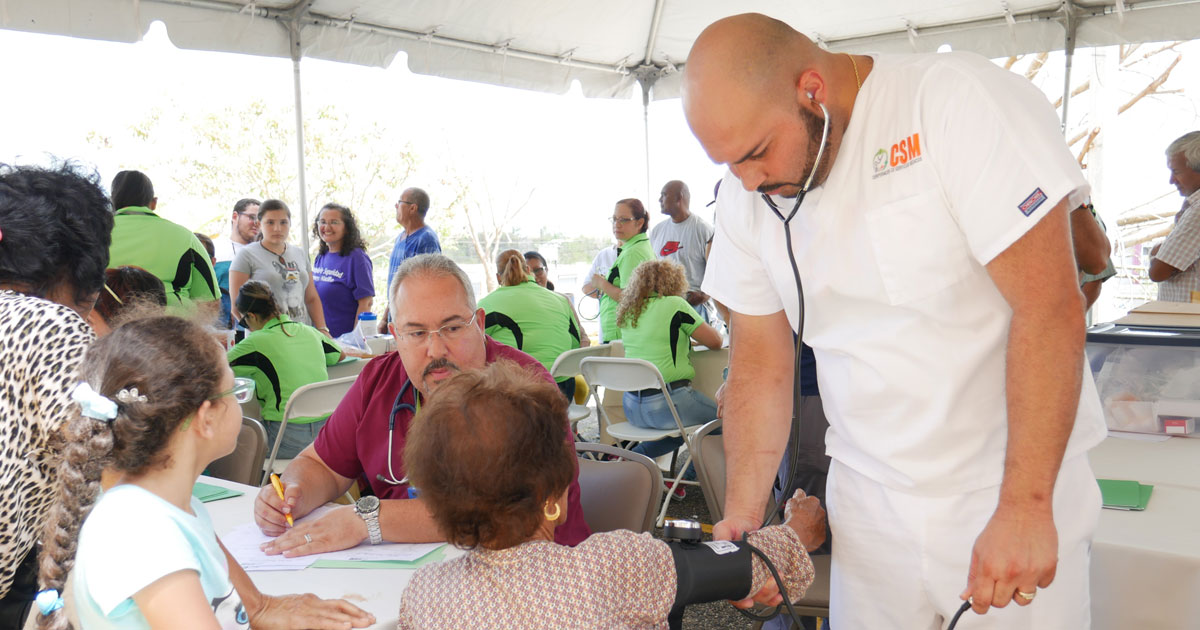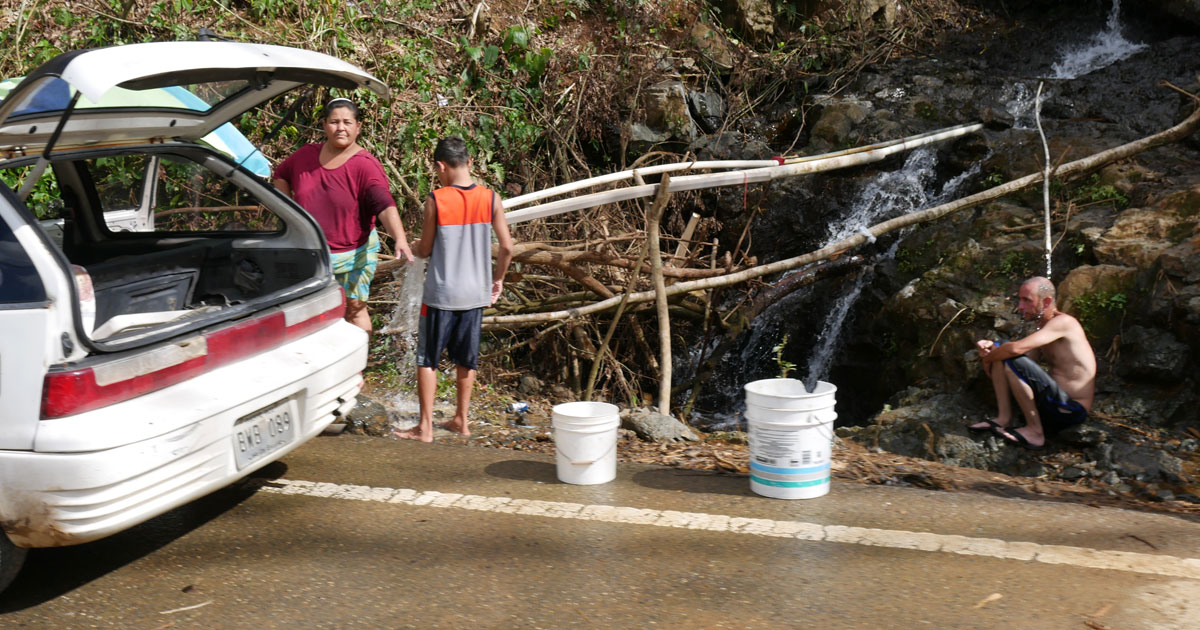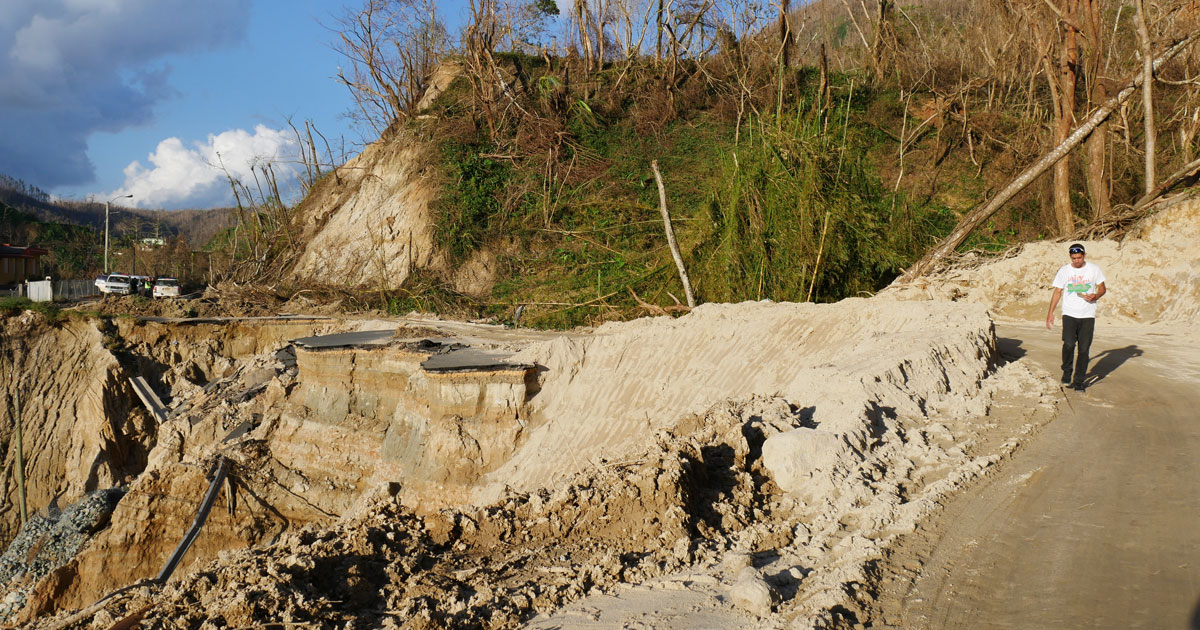- Who We Are
- Clinician Employment
- Publications
- Witness to Witness (W2W)
- Kugel & Zuroweste Health Justice Award
- Your Voice Matters: Photovoice Project
Mon, 10/23/2017 | by Claire Hutkins Seda


Last week, MCN's Alma Galvan spoke via email with Alexis Serrano of Corporacion de Servicios Medicos, a Federally Qualified Health Center in Puerto Rico with which MCN has worked on multiple projects. As communication has been poor since Puerto Rico was decimated by Hurricane Maria in September, little information on how the health centers are coping has been widely distributed. Here, Mr. Serrano answers some questions that Ms. Galvan has posed.
Can you describe how the CSM’s buildings are holding up? How are they at this moment? How many suffered damage and how many are currently functioning?
Fortunately, the CSM buildings on Calle Antonio R. Barcelo #5 in Utuado, PR did not suffer structural damage since the glass windows were protected from the storm and flooding waters of the river. We weren’t able to open the day after the hurricane because there was no access to the area due to the debris that was accumulated by the floodwaters. There was minimal damage to structures at CSM Arecibo, Hatillo, and Aguadilla where the majority of damage was due to water entering through the doors and windows but this did not affect the operation of the clinics.

How many patients are currently being seen? Are the patients receiving the services that they need?
CSM began providing complete services (from nurses, general practitioners, pediatricians, psychologists, pharmacists and medication services), within the first weeks to shelters and communities where patients were already admitted and patients in regions that were not easily accessible. The shortage of fuel to run electrical generators forced us to limit service hours. As the situation improved, we have extend those hours. The island still only has limited amounts of energy. Only 15% of the island has received energy. CSM in Hatilllo and Arecibo have electrical power. During the first few weeks we were able to attend to roughly 55 patients per shelter and 165 patients per week were treated in the clinics. There were another 65 home visits after the hurricane.

How are the communities where CSM operates doing? What is their current status? Do the communities have access to clean water and food?
The entire island suffered significant damage, but the central mountainous area was the most affected during the hurricane. Utuado was one of the most affected villages on the island. FEMA has not been able to meet all the needs of the people. The United States military has taken control [of the effort] that includes the distribution of aid. There are communities without road access due to collapsed and fallen bridges, thus the supply of bottled water is limited. There are many springs where people [in the past] had access to clean water, but now the water has been contaminated with waste and animal caracasses. We are now providing educational material with information on water, food, leptospirosis, Zika, and other health concerns to civilians.

At what capacity is CSM running -- do you think you're at about 25% of normal, 50%, 60%? We in the US don't have a clear picture of what level of progress health facilities have made. What will you need to get you to 90%, to 100% functionality?
We are working at 75% capacity right now. Some health centers [are functioning with the help of] generators, and others with the help of the energy authority service. To work at 100% we would need to install electrical generators at the clinic in Aguadilla. Our staff ...have what they need to be able to provide those services to the community.
You mentioned that emergency plans failed in the face of the hurricane like Maria. In what way(s) do you think CSM could have prepared better?
Our contingency plans did not fail, but... all of the essential resources to be able to function during a disaster of such magnitude [were not in place]; Let me explain: a 100% electrical failure, communications available to only 10% of the island, 20% service of portable water, collapsed roads, fallen bridges, floods, etc. The event was unprecedented, and despite that, we were able to provide services with the resources that we did have. We already had resources in place to provide services given the loss of electrical systems in our emergency plan.
Now that the disaster has passed, what do you feel you could have done differently before the hurricane hit the island? How do you think you can better prepare yourselves for another possible disaster like this one?
Streamline the purchasing process for equipment such as an electrical generator for our Aguadilla clinic. Preparing for a Level 4 hurricane means maximizing the implementation of emergency plans and the physical protection of our facilities and always taking into account the preservation of the lives of our personnel.

What message do you have for health care providers in the US in relation to disaster preparedness?
Maintain updated contingency plans and carry out disaster drills to be better prepared for an event.
How can blog readers support you right now?
Puerto Rico was devastated by this phenomenon. Our priority is to provide health services to the entire community, and to guide them on the prevention of post-disaster diseases. There are many precious resources like drinking water, medicines, food, and especially hands to rebuild communities both physically and emotionally.
Can you provide us an address or a contact name for our readers who want to send donations to CSM directly, or another way to help?
P O Box 907
Hatillo, PR 00659
Like what you see? Amplify our collective voice with a contribution.
Got some good news to share? Contact us on our social media pages above.
Return to the main blog page or sign up for blog updates here.







